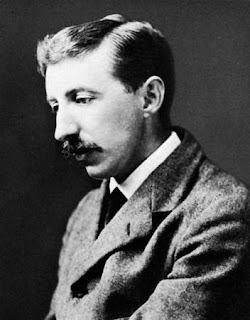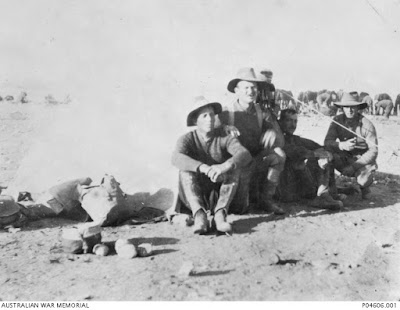One of the tools for self-understanding is to consider what people said of you when you were a child.
While I was tagged as sensitive from time to time, I suppressed that idea until recently. So, I went to Dr Google, and saw several mentions of the book The Highly Sensitive Person: How to Thrive When the World Overwhelms You, by Elaine N. Aron.
Aron was the first to identify the trait as such though she credits earlier observation of the trait to Carl Jung and seems also attracted to his methods of becoming aware of the trait in yourself.
It isn't the answer to everything, but I did learn something about myself. The trait is not uncommon and it’s not an illness. Great!
Aron opens her book with the following quote which highlights her tone: supportive and optimistic.
“I believe in aristocracy, though -- if that is the right word, and if a democrat may use it. Not an aristocracy of power, based upon rank and influence, but an aristocracy of the sensitive, the considerate and the plucky. Its members are to be found in all nations and classes, and all through the ages, and there is a secret understanding between them when they meet. They represent the true human tradition, the one permanent victory of our queer race over cruelty and chaos. Thousands of them perish in obscurity, a few are great names. They are sensitive for others as well as themselves, they are considerate without being fussy, their pluck is not swankiness but power to endure, and they can take a joke.” E.M. Forster, Two Cheers for Democracy
Are you one?
Aron’s book offers a series of questions to help to discover if this may be your trait. For example:
- Do you have a keen imagination and vivid dreams?
- Is time alone each day as essential?
- Are you ‘too sensitive’ according to others?
- Do noise and confusion quickly overwhelm you?
- Do you take a long time to make a decision?
Most people feel overstimulated every once in a while, but for the HSP, it can be a way of life. Aron is a psychotherapist and highly sensitive person herself and her book shows how to identify this trait and make the most of it in everyday situations.
Aron wants us to know that:
- The trait is normal. It is found in 15 to 20% of the population.
- It is innate. It reflects a certain type of survival strategy, being observant before acting.
- HSPs are more aware than others of subtleties.
- Without the stimulation, HSPs are bored.
- But with too much, we are also more easily overwhelmed.
- This trait is not a new discovery, but it has been misunderstood.
Because HSPs prefer to look before entering new situations, they are often called ‘shy’. But shyness says Aron, is learned, not innate. In fact, she says, 30% of HSPs are extraverts, although the trait is often mislabeled as introversion.
She also points out that sensitivity is valued differently in different cultures. In cultures where it is not valued, HSPs tend to have low self-esteem. They are told ‘don’t be so sensitive’ so that they feel abnormal. Her overly simple description of different cultures was disappointing, but the book is general in nature and comparative cultures is not her main focus. A deeper study of this application of the idea may be illuminating, however.
It is also be a useful concept for historians, and biographers, to have in mind. It may be a forgotten element for understanding why some people behave the way they do.
But Aron’s focus is to provide advice to the individual and also to parents and employers (and slightly less convincingly to GPs).
But Aron’s focus is to provide advice to the individual and also to parents and employers (and slightly less convincingly to GPs).
A review of past situations can often confirm that reactions and behaviours are/were ‘informed’ (actually misinformed) by being an HSP.
Strategies for living
Aron suggests that HSPs can gain confident self-awareness by reframing some of their life experiences to take account of the HSP status.
One more positive note came to mind. Early in my administrative career, I had a supervisor who worked through some now forgotten issue with me. At the conclusion of the discussion about how I could deal with situations more effectively in the future, he concluded with ‘I don’t mind if you make mistakes, just make new ones.’ It was both humorous and empowering and reflected his own inner confidence and understanding of people.
The strategies Aron suggested which I have found useful are:
- Take a break to reframe and digest. Breathe deeply, rest or walk.
- Identify my abilities and talk about them.
- Avoid indecision by acknowledging that I can’t do everything but do need to do something.
- Forget the idea of ‘failure’, life is a learning process.
- Do a monthly review of achievements.
- Don’t be a perfectionist.
- Vocation is a balance of personal ‘bliss’ with wider community need.
- Reframe childhood and career events in light of this information especially those previously seen as ‘failures’.
Aron also suggests the intriguing idea of ‘re-parenting’ oneself. Aron’s suggestion here is how you ‘talk’ to yourself. The ideas can help with self-management and will be useful for people managers and teachers/rabbis.
They are actually not new ideas, but they are easy forgotten:
- Maintain a consistent system of values and a happy, healthy home
- Allow enough time.
- Don’t stifle curiosity.
- Intellectually stimulate.
- Encourage friendships and discover hobbies.
- Avoid discouraging unusual questions or attitudes.
- Don’t over-schedule.
- Respect their knowledge.
___
E.M. Forster
E.M. Forster (1 January 1879 – 7 June 1970) was an English novelist, essayist, and social and literary critic - and pretty clearly an HSP. A Passage to India (1924) is considered one of his finest works. The novel examines racism and colonialism as well as the theme of the need to maintain both ties to the earth and a cerebral life of the imagination.
Forster declined to make a list of people who shared what he saw as an admirable characteristic, but I have drawn one up in my mind already and short biographies of some of them will appear in future posts.










